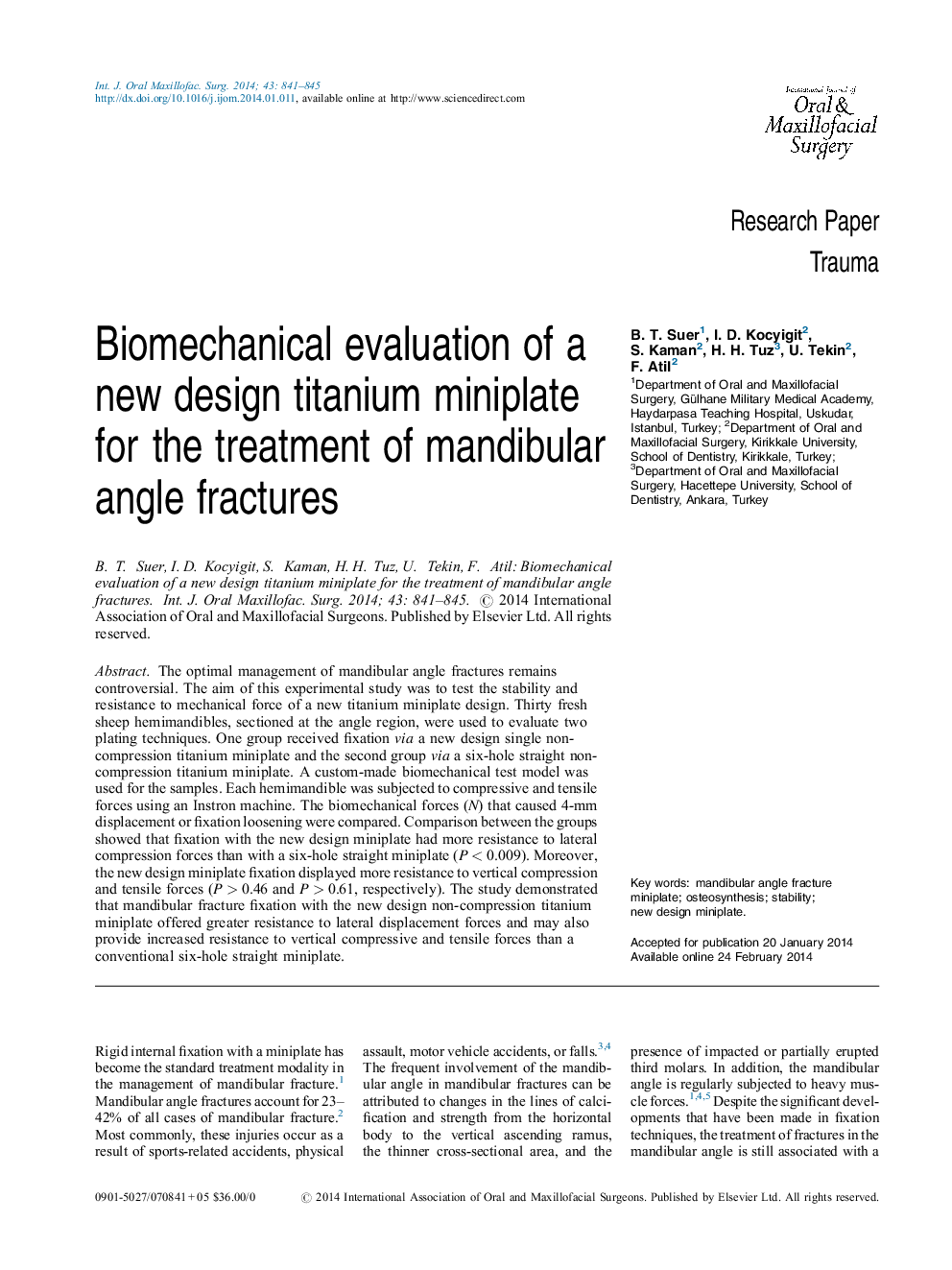| کد مقاله | کد نشریه | سال انتشار | مقاله انگلیسی | نسخه تمام متن |
|---|---|---|---|---|
| 3132483 | 1584140 | 2014 | 5 صفحه PDF | دانلود رایگان |
The optimal management of mandibular angle fractures remains controversial. The aim of this experimental study was to test the stability and resistance to mechanical force of a new titanium miniplate design. Thirty fresh sheep hemimandibles, sectioned at the angle region, were used to evaluate two plating techniques. One group received fixation via a new design single non-compression titanium miniplate and the second group via a six-hole straight non-compression titanium miniplate. A custom-made biomechanical test model was used for the samples. Each hemimandible was subjected to compressive and tensile forces using an Instron machine. The biomechanical forces (N) that caused 4-mm displacement or fixation loosening were compared. Comparison between the groups showed that fixation with the new design miniplate had more resistance to lateral compression forces than with a six-hole straight miniplate (P < 0.009). Moreover, the new design miniplate fixation displayed more resistance to vertical compression and tensile forces (P > 0.46 and P > 0.61, respectively). The study demonstrated that mandibular fracture fixation with the new design non-compression titanium miniplate offered greater resistance to lateral displacement forces and may also provide increased resistance to vertical compressive and tensile forces than a conventional six-hole straight miniplate.
Journal: International Journal of Oral and Maxillofacial Surgery - Volume 43, Issue 7, July 2014, Pages 841–845
